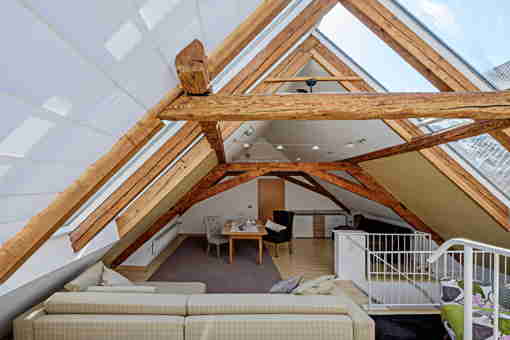Loft conversion in Birmingham Selly Oak
Posted on 26/06/2020 3:39:24 PM

Loft Conversion in Birmingham Selly Oak B29
The most straightforward method is to use rooflights that follow the pitch line of the roof. This type is fitted by removing the tiles and battens where the rooflight will be fitted. The rafters are cut to make way for the rooflight after suitably reinforcing the remaining rafters. The rooflight frame is then fitted and flashings added before making good the surrounding tiling. This type of window is the most economic, and more likely to be allowed without planning permission. Birmingham Selly Oak
Loft conversions have never needed planning permission, it’s only externally visible works altering or extending a roof that do. As with extensions, restrictions for this type of project rely on calculations of volume. Roof extensions must start a minimum of 20cm above the eaves, while pd allows for external roof alterations like solar panels and protruding rooflights on front-facing roof elevations, except, inevitably, in designated areas. Birmingham Selly Oak
loft Conversion in Birmingham Selly Oak B29

6. If I Convert my Loft, Do I Need Planning Permission? Birmingham Selly Oak B29
Converting your loft to living space is a major building job that can affect the appearance, structural stability and fire safety of your property. Here are four things you will need to check before you finalise your plans: whether you need planning permission, especially if you live in a conservation area.
Loft conversions always need approval under building regulations (irrespective of whether they need planning permission). It pays to adopt the full plans application approach and have a detailed scheme approved before you find a builder. Having an approved design will take much of the risk out of the work and also mean the builder has a chance to give you a fixed quotation, rather than a vague estimate.
If you’re concerned about headroom, a mansard is an excellent option for you to choose. Here, you’ll have to remove one side of your roof which will be costly. The mansard conversion means that the slope on the roof will be at least 72 degrees. Although you will need to have planning permission for this style, you will certainly gain extra headspace from your new loft area.
Planning permission or planning consent is the permission granted by the local authority in the united kingdom in order to be allowed to: build something new on land make a major change to your building e. G. Building an extension change the use of your building.
Conventionally, bodies wishing to carry out a development are required to submit a planning application and gain full planning permission from a local planning authority before they can commence with the development. However, pdr allow certain classes of development to bypass full local planning. This means that there are certain types of development which will be automatically granted with planning permission by government. This deregulated system of development, for instance, covers extensions to existing houses and changes between different industrial and residential uses.
Planning permission is not required provided that: 1. No part of the roof light, dormer or extension is higher than the highest part of the existing roof. 2. No part of the roof light, dormer or extension projects by more than 15 centimetres in front of any existing roof slope of the house which faces onto a road and forms the principal or side elevation of the house.
This is a page on Loft conversion in Birmingham Selly Oak